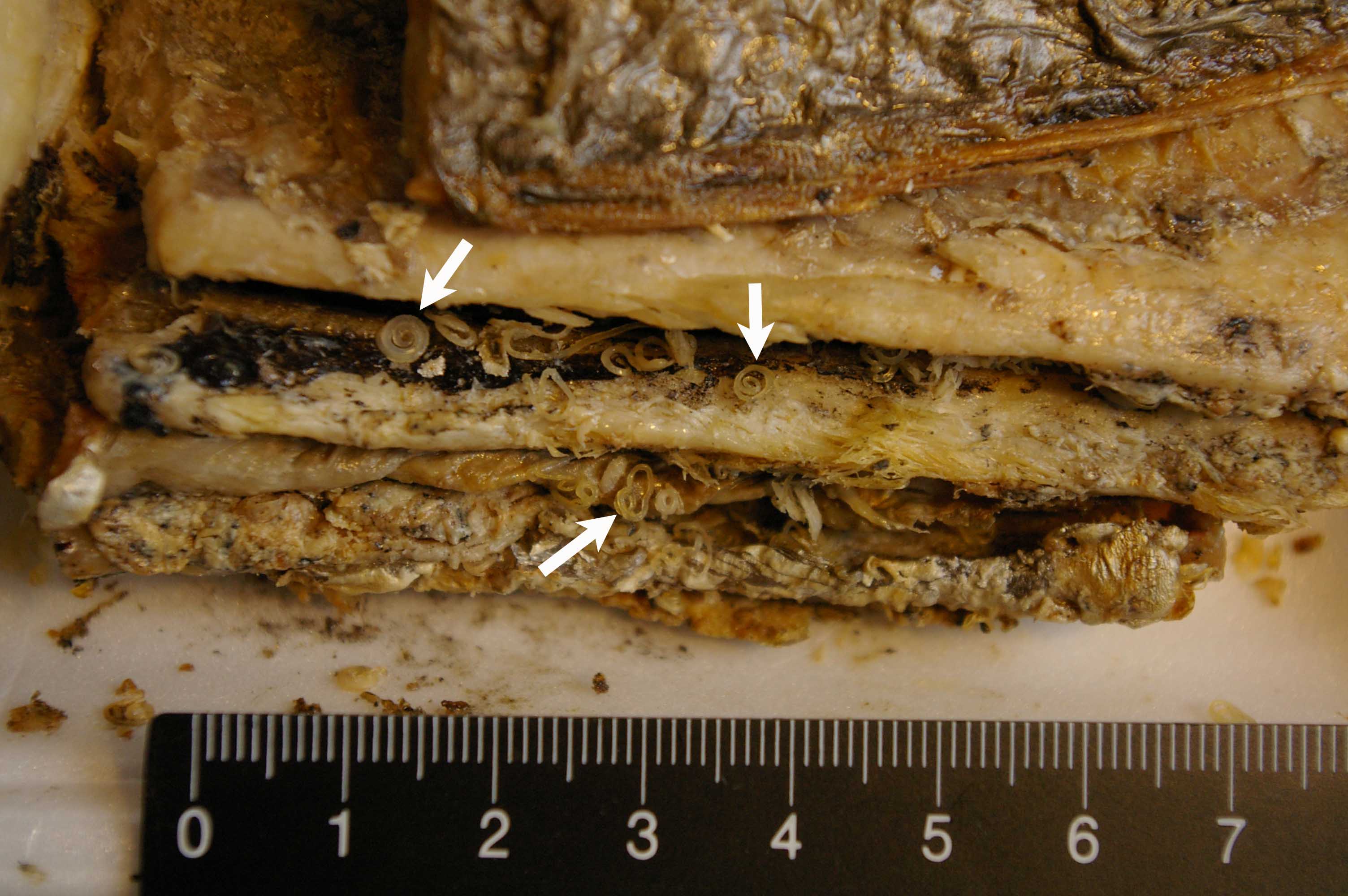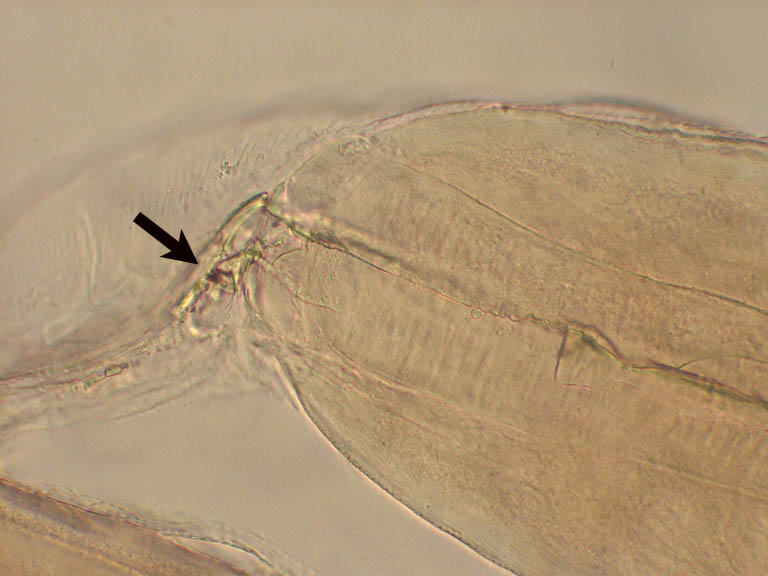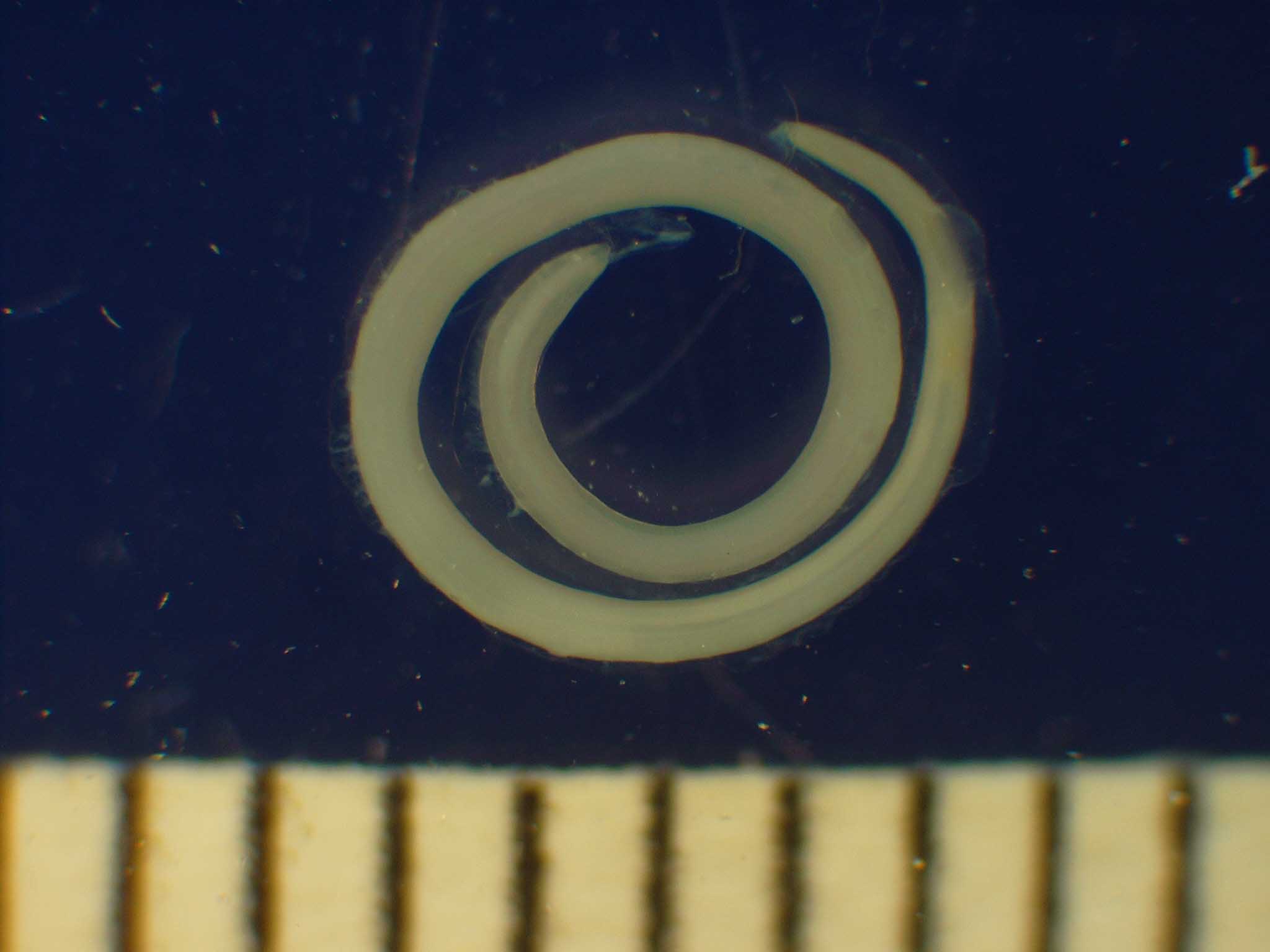
| Parasite | Anisakis simplex |
|---|---|
| Taxonomy | Nematoda, Secernentea, Anisakidae |
| Hosts | Largehead hairtail (Trichiurus lepturus), Chub mackerel (Scomber japonicus), Alaska pollack (Theragra chalcogramma), Pacific cod (Gadus macrocephalus), Chum salmon (Oncorhynchus keta)、Japanese common squid (Todarodes pacificus), and many other marine fishes. |
| Infection site | Body cavity, visceral organs, muscle |
| Clinical sign | A coiled filiform parasite (ca. 2 cm in size) is observed on the body cavity (Figs. 1, 2). |
| Parasitology | Final host is mainly whales, and the parasite develops to the adult inside their stomachs followed by the egg production. Released larva hatched from the egg is ingested by crustacean, e. g. euphausiid. Fishes are infected by eating such krill. Previously, it was considered that Anisakis type I, of which L3 larva causes anisakiasis, is only Anisakis simplex. However, recent studies revealed that type I is composed of A. simplex, A. simplex C, A. pegreffii, A. typical and A. ziphidarum (Mattiucci et al., 2002). |
| Pathology | Pathogenicity to fish is considered to be low or neglectable. |
| Health hazard | A live parasite, the causative agent of anisakiasis, penetrates into the gut wall of human and causes the acute gastroenteritis, viz. violent abdominal pain, nausea and vomiting. Therefore, be careful when the host fishes is consumed raw. Heating or freezing to -20 C for 24 hours is an effective method of killing the parasite. |
| Diagnosis | Morphological observation revealed the presence of a boring tooth at the anterir end (Fig. 3), a long ventriculus without caecum (Fig. 4), a mucron (tail spine) at the blunt posterir end, indicating that this nematode is identified as. L3 larva of Anisakis simplex (Koyama, 1974). |
| Other information | Anisakis simplex parasitizes over 200 species of wild fishes and squids. A. simplex is the most common species of anisakiasis in Japan. |
| References | Koyama, T (1974): I.
Anisakidae larvae. 1. Morphology and classification. Fish and anisakis (The
Japanese Society of Fisheries Science), Koseisha
koseikaku, pp.9-19.
|
(Photos by J. Araki)
Fig. 2. Anisakis simplex from largehead hairtail.

Fig. 1. Anisakis (arrows) in the product of largehead hairtail.
Fig. 4. A ventriculus (arrow) of Anisakis.



Fig. 3. A boring tooth (arrow) at the anterior end of Anisakis.